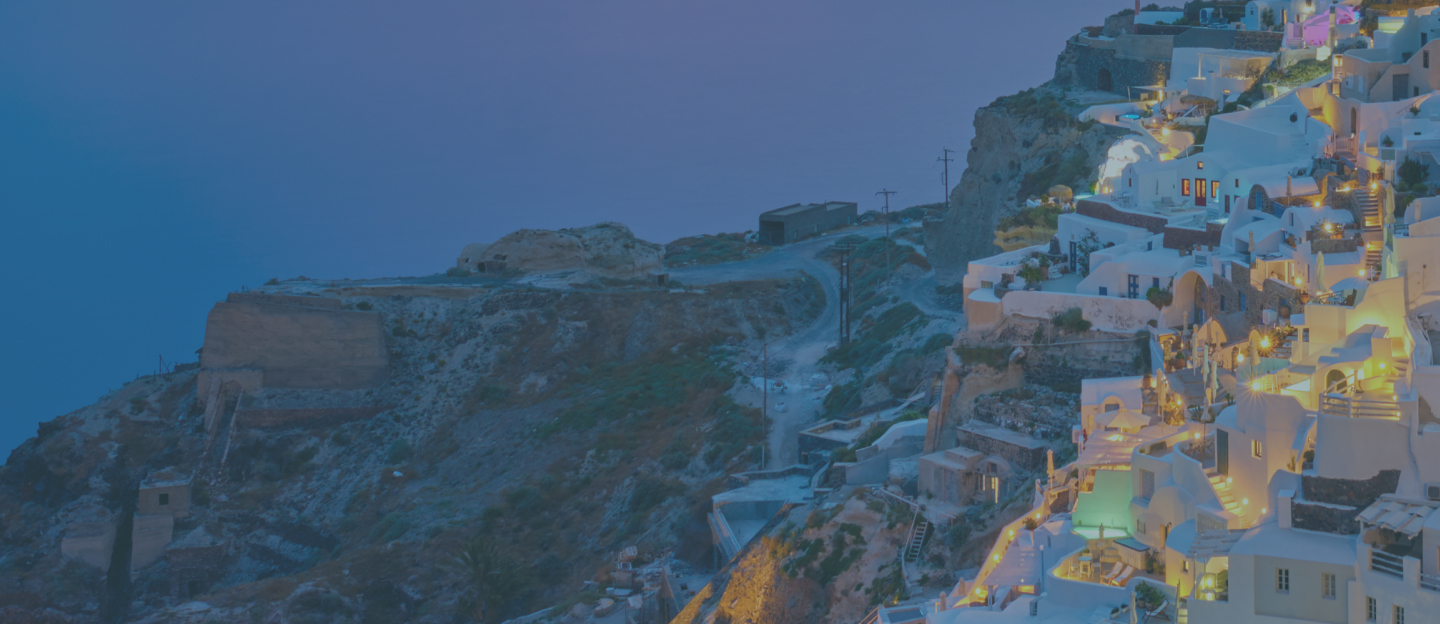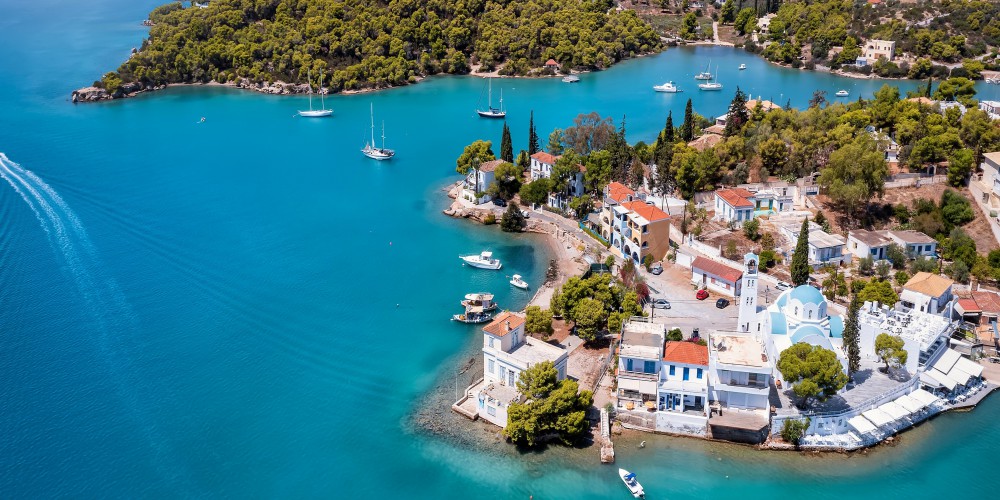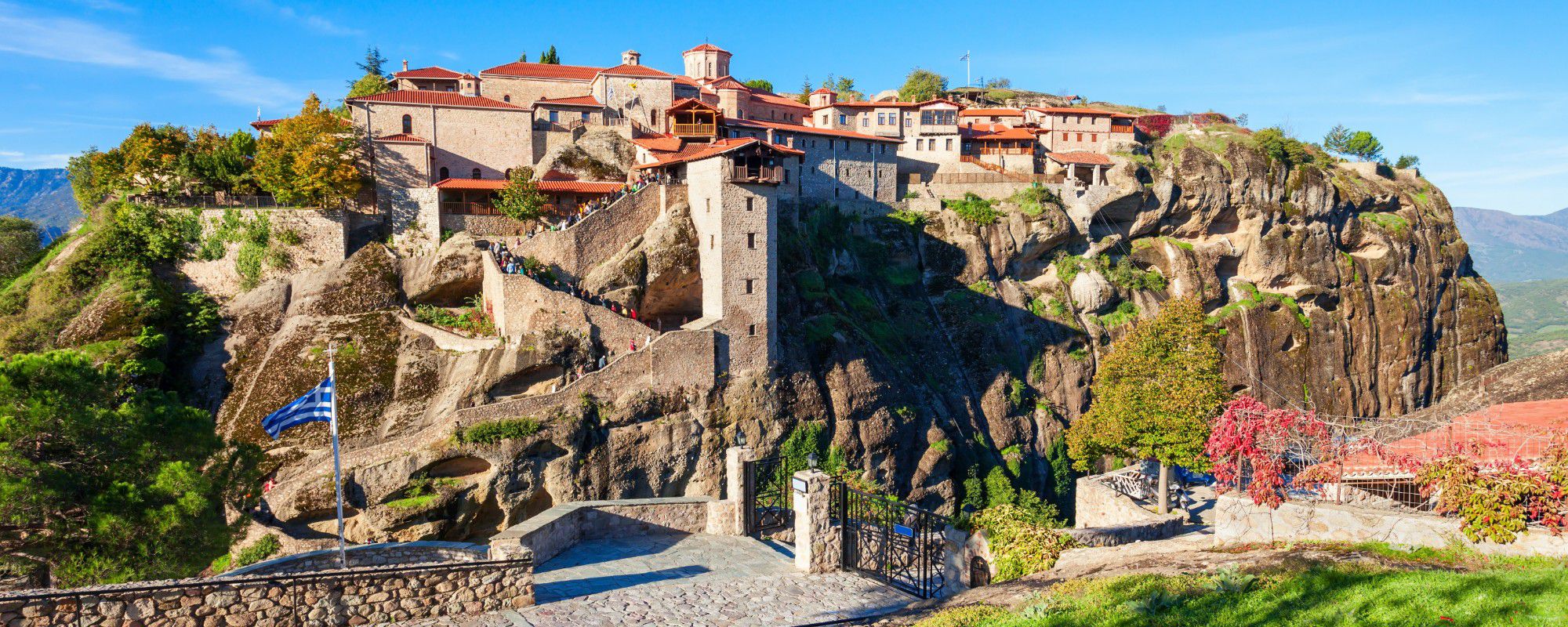
Meteora: The Ultimate Guide
Key Takeaways:
- Meteora is famous for its unique rock formations, which were formed millions of years ago by erosion and weathering.
- It is home to several historic monasteries, which were built on rocky outcrops starting in the 14th century.
- Meteora is a photographer's paradise, with stunning views and dramatic lighting at all times of day.
- Meteora has been a spiritual center for Orthodox Christianity for centuries, and the monasteries are still active today.
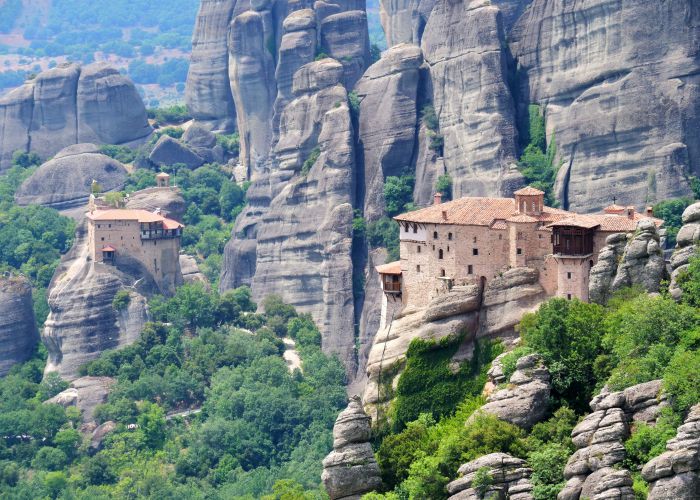
Wanna taste a different side of Greece? Even though Greece is well-known for its deep blue sea and long-stretched beaches, it is also a country of diverse landscapes, satisfying the taste of every traveler.
In case you want to have a 'northern' experience in Greece and discover places of great historical and archaeological importance, Meteora is the place to be!
The geographic region of Thessaly, which has also been mentioned in our Greece travel guide, hosts a site so unusual and awe-inspiring that it has always served as a place of isolation and seclusion. It is the rock formation of Meteora, a geological wonder located in the northern part of the Trikala region close to the modern city of Kalambaka.
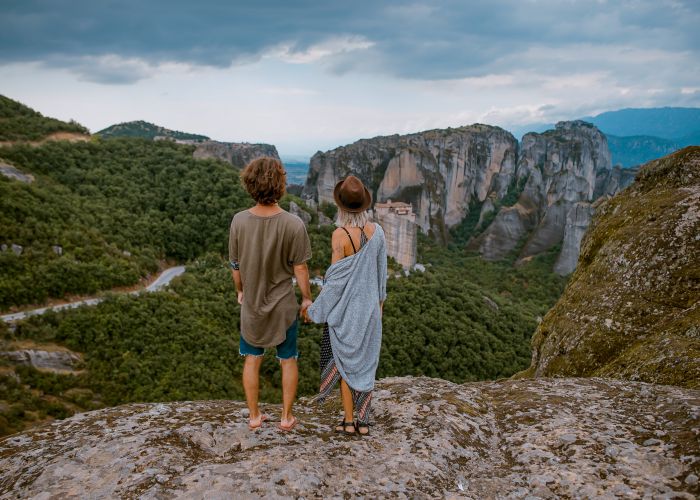
Meteora belongs to the most important monastic communities of Christianity's Greek-Orthodox dogma and was always regarded as a sacred place of worship. That's why they're often referred to as 'holy Meteora.'
Follow us on a journey to this mountainous region and discover why the natural landmark of Meteora and the Meteora monasteries is a UNESCO World Heritage Site. Prepare to discover ancient monasteries and other sites of great importance, even regarding human evolution!
A little bit about Meteora, the 'elevated' rocks
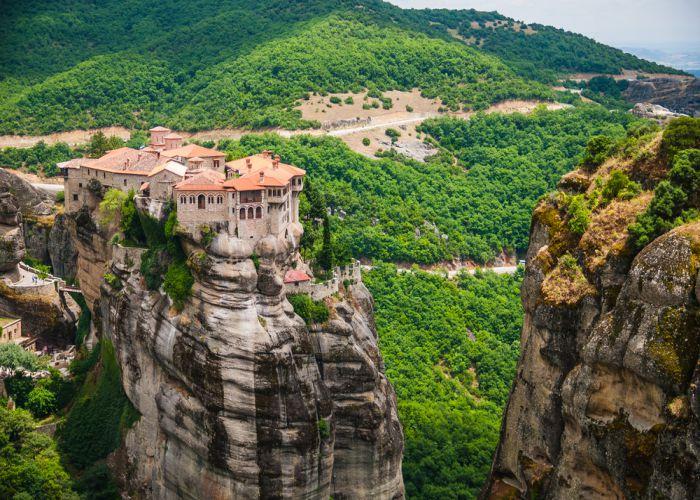
The region of Meteora in Greece is found right next to the dominant mountain range of the Pindus, which consists of the backbone of Greece's mainland. The bizarre-looking vertical rock formations of Meteora were always a place hard to approach and familiar just to locals.
The fact that it is not mentioned in ancient Greek Mythology, despite our knowledge about the people that used to reside in the area, proves the inaccessibility of the location and adds to its mystic nature.
Since Byzantine times, these rock formations of Meteora were chosen by monks as an ascetic retreat, mainly due to their inaccessibility, suitable for their isolation from the secular world and therefore facilitating their focus on their quest for God.
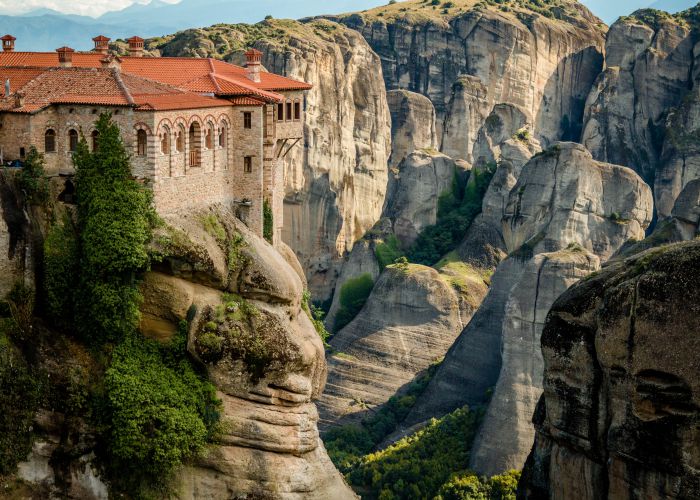
Meteora is a word originating from the ancient Greek word μετέωρος (meteor, meteorite, etc. relate to that word), which means 'lofty' or 'elevated.' They are a group of imposing rocks, reaching a height of over 300 meters, with steep, vertical smooth walls.
Contrary to popular belief, they do not fit the case of a volcanic plug, a result of magma cooling and hardening, but they mostly consist of sandstone and conglomerates.

This type of geological profile outlines the creation of this natural landmark as a result of fluvial activity in combination with tectonic earth movements and environmental erosion. Geologists date the beginning of those processes 60 million years ago during the Paleogene period!
The soft texture of the rocks in Meteora helped the formation of numerous caves in the area. One of these caves is called Theopetra, some 4km away from the modern city of Kalambaka, and constitutes one of the most important sites regarding human evolution.
During excavations in the cave, archaeologists found evidence that shed more light on specific problematic time periods of human evolution. Namely, they discovered evidence regarding the replacement of the Neanderthal occupation with the Homo Sapiens, and evidence of the transitional period from hunter-gatherers to farmers after the end of the last Ice Age. The earliest findings of the cave date back some 130000 years ago!
The Meteora monasteries

Although it is quite bizarre why Meteora was omitted not only from Greek Mythology but also from ancient Greek literature, the region of Meteora (more accurately, the Meteora rock formation) is not mentioned in any text available so far to researchers.
The existence of Meteora, however, did not seem to be unknown during antiquity and especially during early Christian and Medieval times.
During the 9th century (others push that date even before that) early-Christian hermit monks chose Meteora as their place of seclusion and asceticism, and Meteora quickly came to be the second most important monastic Eastern Orthodox community after the monasteries of Mount Athos in Halkidiki.

The numerous caves and narrow fissures on the walls of the rocky towers of Meteora operated as ideal monastic cells, and their summits hosted more than 24 Meteora monasteries. Today, only six Meteora monasteries survive, including one nunnery dedicated to St. Barbara.
The Meteora monasteries consist of important examples of Byzantine architecture and bear priceless murals, icons, and artifacts covering a wide time span of the evolution of Byzantine iconography.
These monasteries were built on the top of the rocks -or stone forest- of Meteora, following the architecture of a castle, which made access to them extremely difficult.
During past decades, hermit monks and visitors had to use human-powered systems of baskets and ropes to ascend the Meteora monasteries. Later on, steps were carved onto the walls of the rock towers, and wooden bridges were constructed.
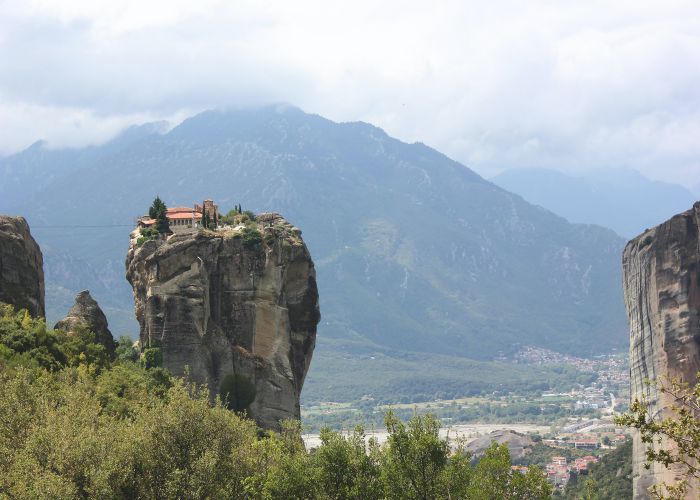
During World War II, the region of Meteora was bombarded, leaving behind ruined monasteries and resulting in a wave of plundering of the valuable and holy relics of those monastic complexes.
The six remaining monasteries are as follows: The Holy Monastery of Great Meteoron, the biggest monastery and oldest of them all, has three chapels and a library of books and manuscripts. The Varlaam Monastery is the second-largest and has been turned into a museum. In the museum of Varlaam Monastery, you can find impeccable religious icons that will steal your breath.
The Roussanou Monastery is arguably among the most impressive but lower than the rest, thus more accessible along with other monasteries, such as the St. Stephen Monastery and the monastery of St. Nikolas. The St Stephen Monastery is the only monastery that has no steps.
Last but not least, the Holy Trinity Monastery is the hardest to reach when you visit Meteora, but it is most definitely worth the effort. The panned view from the Holy Trinity Monastery is truly exceptional.
Why Meteora should be on your bucket list
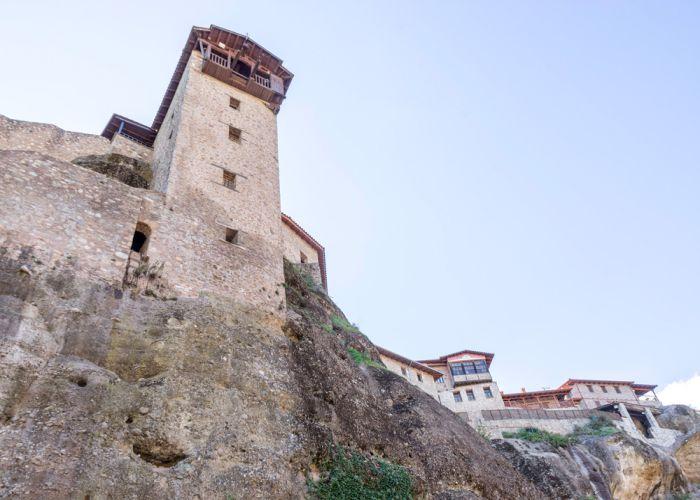
The jaw-dropping rock formations of Meteora are believed to have begun evolving 60 million years ago; the exact explanation for the shape and height of the rocks is yet to be verified by geological experts or scientists.
One theory, however, is that the area was once covered by the sea, and a combination of a withdrawing seabed with extremely strong winds led to the shaping of these pillars.
According to legend, the first inhabitants of Meteora climbed the colossal pillars with their bare hands and feet, despite the ruthless weather conditions. For hundreds of years following, the only means of transferring goods up or down was to use nets and rope and haul them up!
Although maintaining a living close to the sky may have been treacherous at the time, it also provided safety from invaders and raiders.
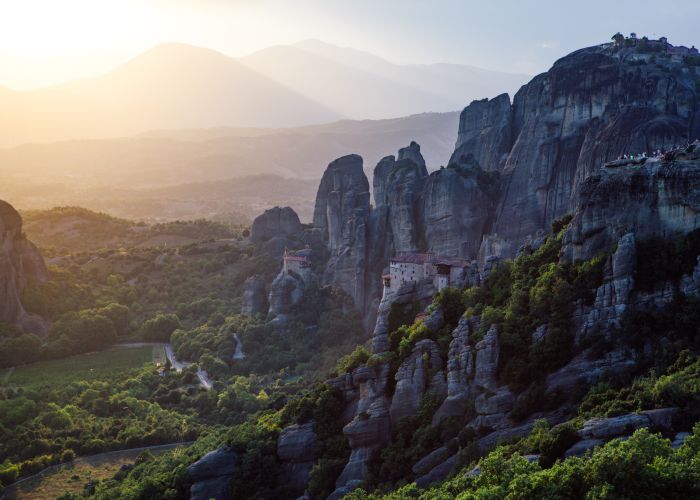
Furthermore, it is believed that during the Turkish occupation, the monasteries of Meteora safeguarded the Hellenic culture and traditions as they became religious, artistic, and academic centers. Thus, if it were not for the monasteries, modern Greece would look far more like Turkey, as her roots would have been forgotten.
The exquisite monasteries of Meteora at the top of these mammoth pedestals are a result of hermit monks’ inspiration to be closer to god, and once you get to the top, you will understand why. The feeling you get looking over one of nature’s grandest views could be easily interpreted as divine.
Pictures truly cannot do Meteora justice. The smells, sounds, and fresh breeze all contribute to the magical feeling you get at the crown of the rocks.
The Meteora monasteries were first built in the 11th century, and today, 6 monasteries are up and running. They can be visited all year round with the exception of a few national holidays, but pay attention to the visiting hours.
Things to do in Meteora apart from visiting a holy monastery

Aside from visiting the enthralling Meteora monasteries of the holy trinity, there are a handful of other things to do in the tiny town of Kalambaka, situated at the foot of the pillars, that are not deeply religious.
One activity you have to add to your to-do list when visiting Meteora is a hike. Multiple hiking trails will lead you up to the most spectacular views: be sure to bring a good-quality camera with you!
Just 3 hours south of Meteora, you will find another part of Greece that visitors from all over the world come to see up close: Delphi. Situated on the mountain of Parnassus, this archaeological complex was the religious and cultural center of the country during antiquity.
This famous sanctuary was home to an oracle established by Apollo, the Greek god of future-telling. People from all over the Mediterranean used to gather here bearing gifts and seeking prophecy.
Delphi was also home to the most important athletic event in Greece after the Olympics: The Pythian Games. Every 4 years, athletes would travel from all over the country to the Ancient Stadium (still there today) to compete in dedication to the god Apollo.
Meteora's one-day itinerary (including a visit to the Holy Trinity Monastery)
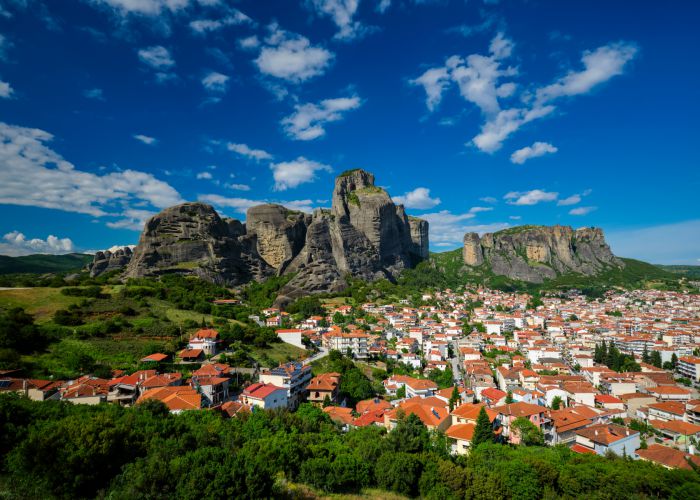
Once visiting Meteora, start your exploration by following one of the organized trails leading you to the walls of the Meteora rocks.
On your way, enjoy your walk through the forest that surrounds the rocks, and discover medieval ruins that vividly reflect how life used to be in the past. One of those spots is the abandoned but restored holy monastery of Ypapanti.
This small monastery belongs to the holy monastery of the Grand Meteoron, and it was founded during the 14th century.
The monks built directly onto the walls of the giant sandstone rock pillars, exploiting every little gap and small cave they could to form a fully functional monastery able to host dozens of monks.
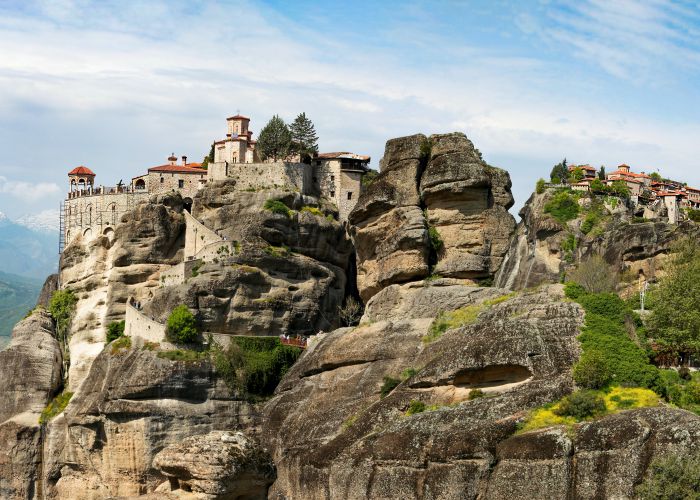
During its lifetime, the holy monastery flourished and got renovated in the 18th century after the decision of a pious local named Athanasios Vlahavas.
Unfortunately, some years later, the forces of the Ali Pasha of Ioannina destroyed the holy monastery, which led to its final abandonment.
Today, the visitor has the chance to wander around the well-preserved ruins of the monastic cells and the restored church of the monastery, all in a pristine, spectacular natural environment.
Continue your walk to the closeby holy monastery of Rousanou. This nunnery was built during the 16th century, and it is one of the six still operating monasteries of Meteora. The building complex occupies the whole plateau of the rock, making it an impenetrable fort.
During past years, the entrance to the monastery was allowed through the crossing of a retractable wooden bridge and a staircase carved into the natural bedrock. This monastery is not dedicated to the holy trinity but to St. Barbara, and it is open all week except for Wednesdays.
For more information, click here.

Your last stop should be the most impressive and largest monastery of them all, the Great Meteoron Monastery.
Located at the highest point of this unique landmark, the Great Meteoron Monastery has a history of several centuries. Initially founded in the 14th century, this monastic complex faced numerous phases of expansion and wealth.
Access to the holy monastery was literally impossible because of the high vertical walls of the geological formation. Therefore, the monks came up with another idea, and they built a tower that hosted a winch mechanism designed to carry people and supplies into the complex.
Today, a staircase is carved on the walls of the rock, making it easier for both monks and visitors to enter the monastery.
Some of the things you should not miss when you visit Meteora are the Ossuary where the bones of generations of monks were put to rest, the old kitchen, the medieval cellar, and of course, the church of the Transfiguration of Jesus Christ and the chapel of St. Constantine and St. Helen.
Final Thoughts
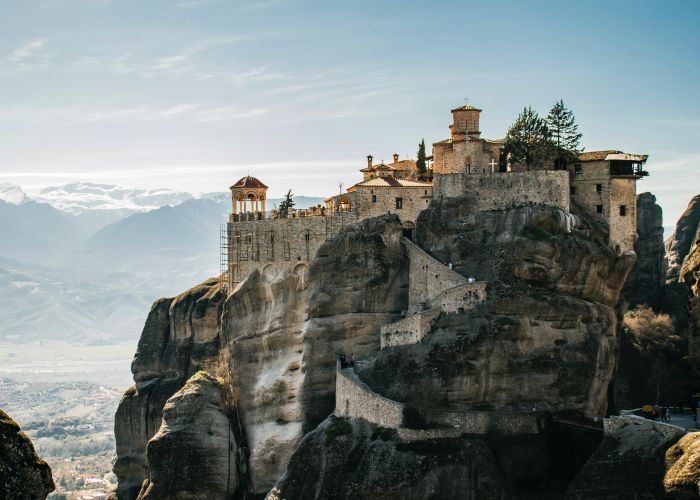
Nowadays, Meteora belongs to the network of sites protected by UNESCO as World Heritage Sites.
Each year, more and more visitors choose Meteora and all the monasteries as it is one of the most up-and-coming authentic travel experiences in Greece; a Meteora tour will leave no doubt in your mind!
If you want to see the unique natural landmark of Meteora, experience the religiosity of the monasteries of the holy trinity and other saints, and discover ancient sites from prehistoric occupied caves to wonderful surviving Byzantine churches, then visit Meteora, it is the place for you!
Plan your own trip to Meteora, book a Meteora tour, or check out one of our Greece tours.
Frequently Asked Questions
How long does it take to climb Meteora?
Is Meteora the oldest place on Earth?
